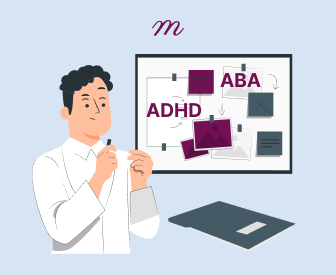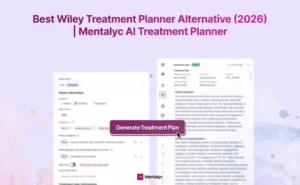Applied Behavior Analysis (ABA) is a scientific discipline that employs empirical methods to identify environmental variables that reliably influence socially significant behavior and to develop behavior change procedures that take practical advantage of those findings. Rooted in the philosophical tradition of behaviorism, ABA operates on the premise that behavior is lawful and determined by environmental contingencies.
The foundational framework of ABA is comprised of several key elements:
1. Behavior: Observable and measurable actions or responses of an individual. 2. 3. Antecedents: Environmental stimuli or conditions that precede a behavior. 4. 5. Consequences: Events or stimuli that follow a behavior, potentially altering its future probability. 6. 7. Contingencies: The relationships between behaviors and their antecedents and consequences. 8.
ABA employs a systematic approach to behavior modification through the following processes:
1. Operational definition of target behaviors 2. 3. Precise measurement of these behaviors 4. 5. Analysis of the environmental contexts in which behaviors occur 6. 7. Implementation of interventions based on behavioral principles 8. 9. Ongoing data collection and analysis to evaluate intervention efficacy 10.
The core theoretical underpinning of ABA is operant conditioning, which posits that behaviors are shaped and maintained by their consequences. Through the systematic manipulation of antecedents and consequences, clinicians can increase the frequency of adaptive behaviors and decrease maladaptive ones.
This article aims to provide mental health professionals with an in-depth understanding of how ABA techniques can be applied to ADHD treatment. We will explore the principles of ABA, its application to ADHD, specific techniques, and practical examples to illustrate their implementation.
Understanding ABA and Its Relevance to ADHD
Applied Behavior Analysis is a scientific approach to understanding behavior and how it is affected by the environment. ABA focuses on the principles that explain how learning takes place. The core concept of ABA is that desired behaviors can be taught through a system of rewards and consequences.
ABA is particularly relevant to ADHD treatment for several reasons:
1. Focus on observable behaviors: ABA targets specific, observable behaviors that are characteristic of ADHD, such as inattention, hyperactivity, and impulsivity. 2. 3. Structured approach: The systematic nature of ABA aligns well with the need for structure often beneficial for individuals with ADHD. 4. 5. Individualization: ABA interventions can be tailored to each individual's specific needs and circumstances. 6. 7. Measurable outcomes: ABA emphasizes data collection and analysis, allowing for objective measurement of progress. 8. 9. Generalization: ABA techniques aim to help individuals apply learned skills across various settings and situations. 10.
Core ABA Techniques for ADHD Treatment
1. Positive Reinforcement
Positive reinforcement is a fundamental technique in ABA that involves providing a reward or pleasant consequence following a desired behavior. This increases the likelihood of the behavior being repeated.
Example: A child with ADHD completes a homework assignment without distraction. The therapist or parent provides immediate praise and allows the child to choose a preferred activity for 15 minutes.
Implementation tips:
Identify reinforcers that are meaningful to the individual
Provide reinforcement immediately after the desired behavior
Gradually reduce the frequency of reinforcement as the behavior becomes more consistent
2. Token Economy Systems
Token economies are a form of positive reinforcement where individuals earn tokens for displaying target behaviors. These tokens can later be exchanged for preferred items or activities.
Example: A student earns stars for staying seated during class, completing assignments, and raising their hand before speaking. At the end of the week, they can exchange their stars for rewards like extra computer time or a special privilege.
Implementation tips:
Clearly define the behaviors that earn tokens
Establish a varied menu of rewards to maintain interest
Gradually increase the number of tokens required for rewards as behaviors improve
3. Behavioral Contracting
Behavioral contracts are written agreements between the individual with ADHD and their therapist, teacher, or parent. These contracts specify target behaviors, consequences for meeting or not meeting goals, and the terms of the agreement.
Example: A teenager with ADHD agrees to complete homework for 30 minutes each day without using their phone. If successful for a week, they earn extended curfew on the weekend.
Implementation tips:
Involve the individual in creating the contract to increase buy-in
Make sure the terms are clear, specific, and achievable
Regularly review and adjust the contract as needed
4. Self-Monitoring
Self-monitoring involves teaching individuals to observe and record their own behavior. This technique helps increase self-awareness and can lead to improved self-regulation.
Example: A child uses a simple checklist to track whether they remembered to bring necessary materials to each class throughout the school day.
Implementation tips:
Start with one or two target behaviors to avoid overwhelming the individual
Use age-appropriate recording methods (e.g., stickers for younger children, apps for teenagers)
Provide feedback and reinforcement for accurate self-monitoring
5. Time Management and Organization Skills Training
Many individuals with ADHD struggle with time management and organization. ABA techniques can be used to teach and reinforce these crucial skills.
Example: Breaking down a large project into smaller, manageable tasks and creating a visual schedule to track progress.
Implementation tips:
Use visual aids like calendars, timers, and checklists
Teach prioritization skills
Practice estimating how long tasks will take
6. Response Cost
Response cost is a form of negative punishment where a reinforcer is removed contingent on undesired behavior. This technique can be effective in reducing problematic behaviors.
Example: A child loses a token from their token board for calling out in class without raising their hand.
Implementation tips:
Pair response cost with positive reinforcement for desired behaviors
Ensure the individual always has the opportunity to earn reinforcers
Use sparingly and consistently
7. Differential Reinforcement
Differential reinforcement involves reinforcing desired behaviors while withholding reinforcement for undesired behaviors. This technique is particularly useful for replacing problematic behaviors with more appropriate ones.
Example: Reinforcing a child for using words to express frustration instead of having a tantrum.
Implementation tips:
Clearly define both the target behavior and the behavior to be replaced
Provide immediate reinforcement for the desired behavior
Be consistent in withholding reinforcement for the undesired behavior
Practical Examples of ABA Techniques for ADHD Symptoms
Addressing Inattention
1. Task Analysis and ChainingBreak complex tasks into smaller, manageable stepsReinforce completion of each stepGradually increase task complexity 2.
Example: Teaching a child to clean their room
Step 1: Pick up toys from the floor
Step 2: Put dirty clothes in the hamper
Step 3: Make the bed
Step 4: Organize items on the desk
1. Visual SchedulesCreate a visual representation of daily routines or task sequencesUse pictures or written words depending on the individual's age and reading abilityReinforce following the schedule 2.
Example: Morning routine schedule
1. Wake up (picture of an alarm clock) 2. 3. Brush teeth (picture of a toothbrush) 4. 5. Get dressed (picture of clothes) 6. 7. Eat breakfast (picture of a bowl and spoon) 8. 9. Pack backpack (picture of a backpack) 10. 11. Environmental ModificationsReduce distractions in the environmentCreate designated spaces for specific activities 12.
Example: Setting up a homework station
Choose a quiet area away from TVs or high-traffic areas
Provide necessary supplies (pencils, paper, calculator)
Use noise-cancelling headphones if needed
Addressing Hyperactivity
1. Structured Movement BreaksIncorporate regular, planned movement activities throughout the dayUse a timer to signal break times 2.
Example: Classroom movement breaks
Every 20 minutes, allow a 2-minute stretch break
Incorporate active learning strategies (e.g., stand up when answering questions)
1. Alternative Seating OptionsProvide seating that allows for movement while staying in place 2.
Example: Flexible seating choices
Wobble cushions
Exercise balls as chairs
Standing desks
1. Heavy Work ActivitiesIncorporate activities that provide proprioceptive input 2.
Example: Classroom jobs
Carrying books to the library
Pushing a cart with supplies
Rearranging desks for group work
Addressing Impulsivity
1. Wait TrainingSystematically increase the time an individual must wait before receiving reinforcement 2.
Example: The "Wait Game"
Start with a very brief wait time (e.g., 5 seconds) before providing a reinforcer
Gradually increase wait time as the individual succeeds
Provide praise for successful waiting
1. Self-Regulation TechniquesTeach and reinforce the use of self-regulation strategies 2.
Example: The "Stop and Think" method
1. Teach the individual to recognize impulsive urges 2. 3. Practice stopping and taking a deep breath 4. 5. Think about consequences before acting 6. 7. Reinforce successful use of the strategy 8. 9. Social Skills TrainingUse role-play and modeling to teach appropriate social interactions 10.
Example: Turn-taking in conversations
Model and practice waiting for others to finish speaking
Reinforce listening behaviors (e.g., making eye contact, nodding)
Use visual cues (e.g., a "talking stick") to indicate whose turn it is to speak
Implementing ABA Techniques
1. Conduct a Thorough Functional Behavior Assessment (FBA)Identify the function of problematic behaviorsUnderstand environmental factors that may be contributing to ADHD symptomsUse this information to inform intervention strategies 2. 3. Develop Clear and Measurable GoalsSet specific, achievable objectivesUse data to track progress and adjust interventions as needed 4. 5. Ensure Consistency Across SettingsCollaborate with parents, teachers, and other caregiversProvide training to ensure consistent implementation of strategies 6. 7. Regularly Review and Adjust InterventionsADHD symptoms may change over timeBe prepared to modify strategies as the individual develops and their needs change 8. 9. Combine ABA with Other Evidence-Based ApproachesConsider integrating ABA techniques with other interventions such as cognitive-behavioral therapy or social skills trainingCoordinate with medical professionals if the individual is also receiving pharmacological treatment 10. 11. Prioritize GeneralizationTeach skills in various settings and with different peopleProvide opportunities to practice skills in natural environments 12. 13. Foster Self-AdvocacyAs appropriate, involve the individual in treatment planningTeach individuals to recognize their needs and ask for accommodations 14.
Ethical Considerations in Using ABA for ADHD
While ABA can be highly effective, it's crucial to implement these techniques ethically and with respect for the individual's autonomy and dignity. Consider the following:
1. Obtain informed consent from the individual and/or their guardians 2. 3. Prioritize positive reinforcement over punishment-based strategies 4. 5. Respect the individual's personal boundaries and preferences 6. 7. Avoid overly rigid or controlling interventions that may cause distress 8. 9. Regularly assess the social validity of interventions 10. 11. Be mindful of the potential for learned helplessness or over-reliance on external reinforcement 12.
Applied Behavior Analysis offers a range of effective techniques for addressing the core symptoms of ADHD. By focusing on observable behaviors, providing structured interventions, and emphasizing positive reinforcement, ABA can help individuals with ADHD develop crucial skills and strategies to manage their symptoms.
As mental health professionals, it's essential to tailor these techniques to each individual's unique needs and circumstances. Regular assessment, data-driven decision-making, and collaboration with the individual and their support network are key to successful implementation.
While ABA is not a cure for ADHD, when applied skillfully and ethically, it can significantly improve functioning and quality of life for individuals with this condition. As research in this field continues to evolve, staying informed about the latest developments and best practices will ensure the most effective and compassionate care for individuals with ADHD.
Why other mental health professionals love Mentalyc

“Do yourself a favor, make your life easier. Use the tools that are readily available … I found Mentalyc to be one of the best tools that I’ve ever used.”
Licensed Marriage and Family Therapist

“For those who have hesitations … It is a lifesaver. It will change your life and you have more time to be present with your patients.”
Licensed Clinical Social Worker

“It immediately changed my quality of life, personally and professionally. I went from 3–4 hours a week of notes to 1 hour at most … that alone is invaluable personally and professionally.”
Owner/Independently Licensed Marriage & Family Therapist (IMFT)

“If I were recommending this software to a colleague, I would tell them that it is the best thing that they could do for their practice.”
Licensed Professional Counselor







